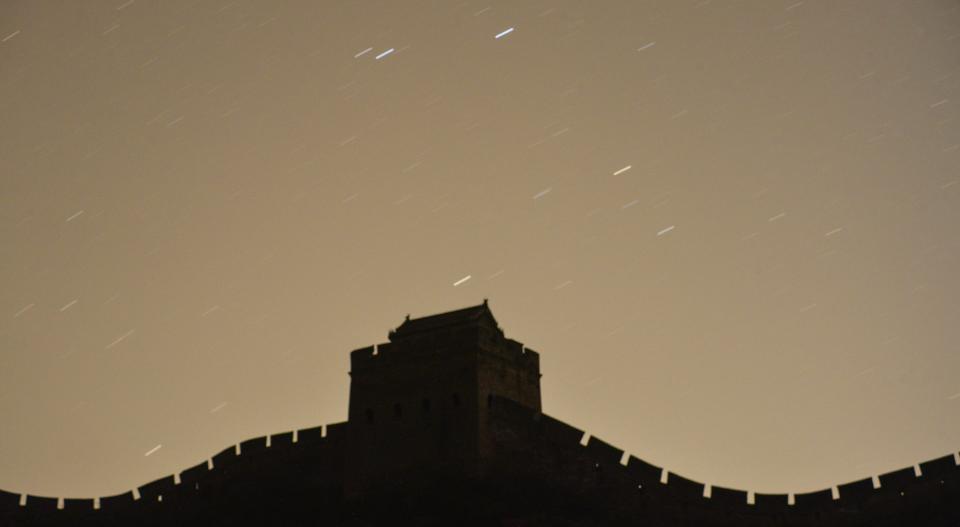Lyrid meteor shower 2024: When and where to look up
April's annual Lyrid meteor shower peaks Sunday night, offering skygazers a chance to spot shooting stars as Earth passes through debris from the comet Thatcher.
Known for fast and bright meteors, the Lyrid meteor shower is active during late April. This year's peak occurs from Sunday night into Monday morning for those in the U.S.
NASA Ambassador Tony Rice said the outlook for seeing the Lyrid meteor shower is not great this year because of a nearly 95% full Moon.
"Every year, we have to look at what the Moon is doing to determine what that particular meteor shower is going to be like," Rice said. "This one's not going to be one we're going to write home about. Unfortunately, the Moon is going to be nearly full."
VISITS TO EYE DOCTORS AND ONLINE SEARCHES SURGE FOLLOWING TOTAL SOLAR ECLIPSE
Bright moonlight could wash out the chance to see a shooting star or two.

The Lyrids usually produce about 18 meteors per hour during peak activity, a small quantity compared to other meteor showers like the Perseids. However, because of where the meteors radiate from, the Lyrids are usually an excellent skywatching show when the Moon conditions are better.
According to NASA, the Lyrids' radiant point is in the Lyra constellation near the brightest star in the constellation, Vega.
HUBBLE TELESCOPE REVEALS ILLUSIONARY TALE OF SPIRAL GALAXY AND BRIGHT STAR
"All meteor showers get their name from the constellation where they appear to be emanating from. And that's just the point in the sky where the Earth is kind of heading towards at that time," Rice said. "And that particular radiant point is pretty high in the sky. When it's low in the sky, a lot of the meteors get hidden below the horizon, but this particular one is high in the sky, so we tend to see a few more meteors."
As one of the brightest stars in the sky, the star Vega serves as a good starting point for looking for the meteors, but NASA said it's best to view the Lyrids away from their radiant.
Find a dark place away from city lights to watch the meteor shower. To improve your viewing experience, give your eyes about 15 minutes to adjust to the dark.
Rice said your best bet to see the Lyrids is after moonset, which happens about an hour before sunrise.
Check timeanddate.com to find out when the Moon sets in your area. On the U.S. East Coast, it happens after 5 a.m. Monday.
According to the FOX Forecast Center, the weather across the Central U.S., Great Lakes and Northeast regions will be favorable for viewing the meteor shower with fewer clouds in the forecast.
"If you're an early riser, I would definitely get out there and take a look," Rice said. "You might be able to see a couple only once the Moon is down and the skies are a little bit darker. But once that Sun comes up, you know, the show's over."
If this celestial show disappoints or cloud cover gets in the way, the Eta Aquarids meteor shower in early May could offer another chance to see shooting stars in the night sky. The Eta Aquarids peak on May 5 and 6.
Original article source: Lyrid meteor shower 2024: When and where to look up

